This section is a live section for 2014 meetings etc and will be updated as the year progresses
January 19th Meeting.
Our president Andy Paterson welcomed everyone to the first meeting in 2014, it was also noted we had an excellent attendance and it was quite uplifting to see so many people in the Hall.
Andy handed over to Keith Brand who was the guest speaker for the day and his subject was keeping up to date with Pesticides Fungicides etc.
Keith is a well known grower throughout Scotland, he is a specialist in Gladioli and commented on his show success at last years shows, his presentation covered many of the chemicals used throughout farming, nurseries and amateur use, the content was split into groups.
Each group was covered explaining the history of each section as well as the future, for example what we commonly use in the garden and greenhouse at present and whether these items we use currently will be available in a few years time.
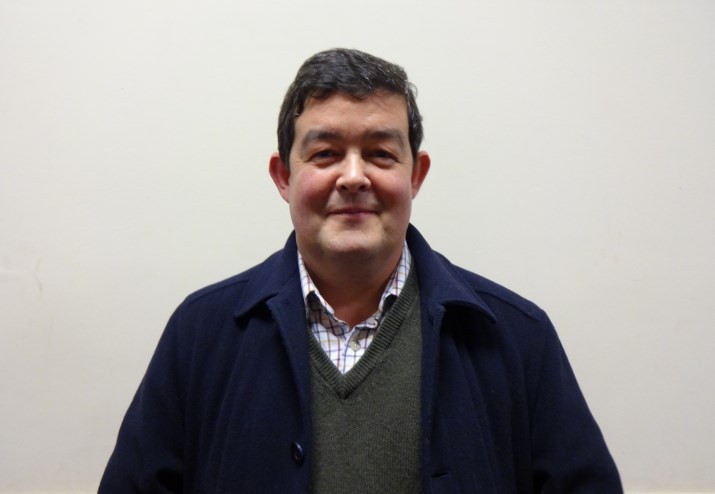
Keith explained that many of the changes on the scene at the moment are driven by EU Directives and affect a great number of chemicals used at present, one main reason behind these changes are the need to protect wild life in the countryside and the garden .
A discussion was opened up on the use of Neonicotinoids which are used extensively in industry as well as for amateur use. These are a relatively new products having been developed in the 1980,s . They were developed to produce a systemic pesticide to attack aphids and other sap feeding pests as well as root feeding grubs. They are widely used but now they believe that the chemicals in some of the products are damaging the central nervous system of Bees which are the main pollinating insect for many of our crops therefore another method is required to protect the crops. Several European countries have already applied partial bans on certain products.
Increasingly people are turning to Biological controls as a safer alternative to the chemically based ones, as time goes on the effectiveness of these will increase as there is a great deal of research work being done to advance this method of protection .
Keith covered many areas where we use chemicals to protect our crops be it vegetable or flowers each being appreciated by the audience, even when the subject of a basic slug pellet was raised, using something as simple as a pellet would raise the risk to your pets depending on the chemical make up of the pellet. Each of these pellets looks the same size and colour and smells the same, therefore it once again proved you must be extremely careful when purchasing any product ans be aware of the risks,
Keith gave the members an excellent presentation on the use of Pesticides this showed a vast knowledge on crop protection, as well as the ability to make this subject interesting and enjoyable.

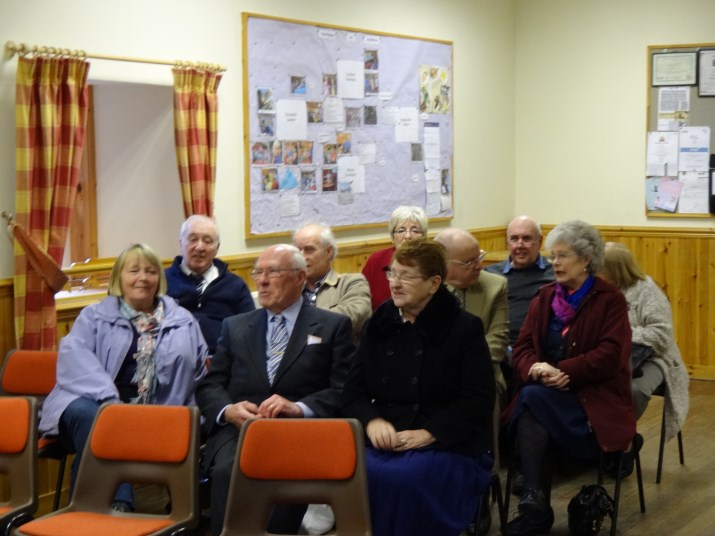
-----------------------------------------------------------------------------------------------------------------------------------
February 16th Meeting.
In the absence of our President Andy Paterson, Vice President Jim Evans welcomed everyone to the second meeting in 2014, it was again noted we had an excellent attendance and it was good to see so many people were able to attend our regular monthly meeting in the Hall.The audience was then introduced to John Hamilton from Coalburn
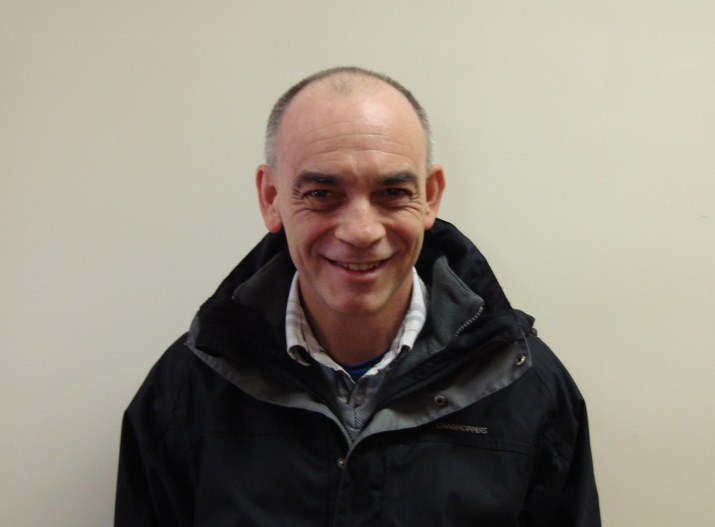
John is a very well known Begonia grower throughout the country and has won many major championships over a number of years with his cut blooms winning the British Begonia Championship and his pots winning the Scottish Pot Championship. he is also an experienced Judge
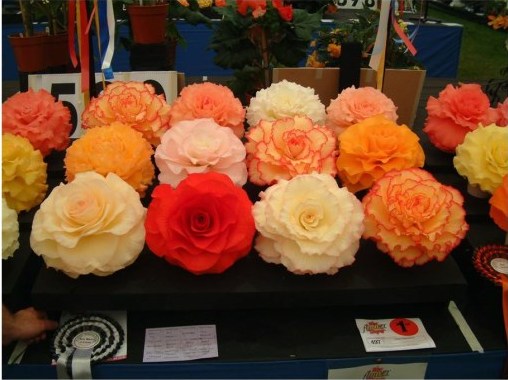
One of Johns "Championship Board" at Ayr Show

John has also hybridised several new begonia varieties and that is the subject for his discussion this afternoon.
The section following gives his method from preparation through to the harvesting the seed, then growing on to Bloom.
The first thing to do is make available the plants to enable hybridising, this
is normally done by taking basal cuttings early in the season March and April and growing these particular cuttings on to form the plants used to provide female flowers for hybridising.
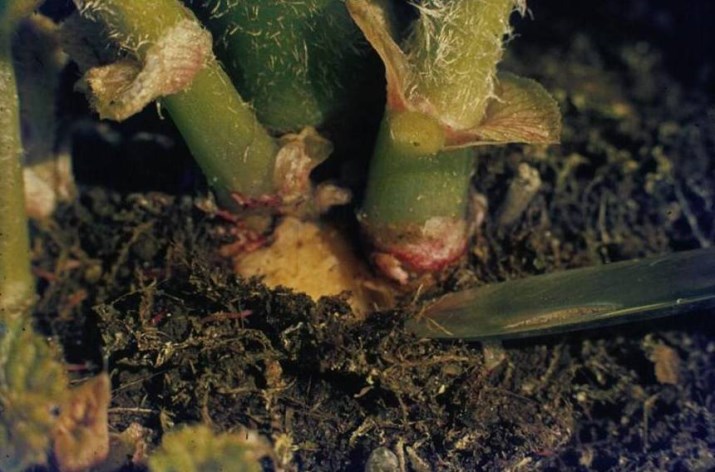
The plants used to supply the male flowers are stem cuttings taken June and July and grown on and allowed to flower producing the males which give the pollen
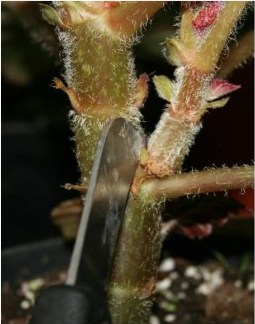
Care must be taken not to damage the stem whilst taking cuttings

Cuttings placed in a propagator to assist with faster rooting of plants.
Identifying the male and female flowers to be used is very simple

The males have no seed pod at he rear of the flowers, as above. If you manage to produce pollen as can be seen with the production of stamens in the centre of the flower to the left, the male flower normally a double ie. multi layers of petals also changes to become a single flower. To encourage this to happen do not feed these cuttings, feeding encourages the plant to produce double flowers.
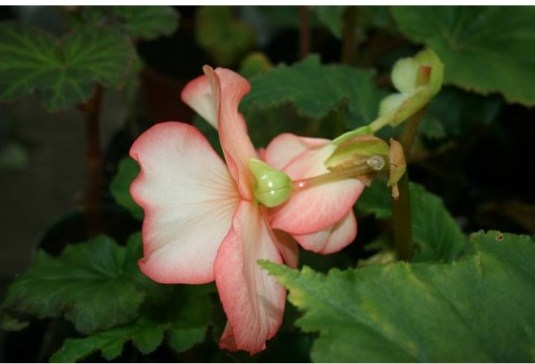
The female flowers are easy to identify with the seed pod at the rear of the flower, and they are always single flowers ie. a single layer of petals.
In Scotland hybridising is best carried out in October and November at this time of year pollen is more easily produced by the male flowers, that is the hardest thing to acquire for use in hybridising. The best time of day to attempt hybridising is around midday when it is sunny, these conditions give the best chance of success.
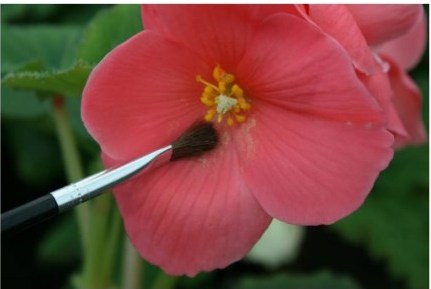
To hybridise you simply take pollen that comes from the stamens at the centre of the flower, you can see it lying on the petals pick it up on a brush and transfer it onto the female flower. To encourage the pollen to land on the petals gently tap the flower stem.
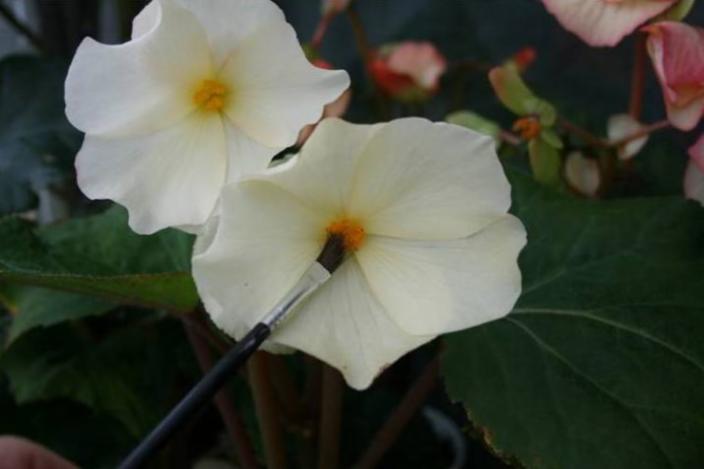
Here you see the pollen being transferred using the brush onto the stigma at the centre of the female flower.
After around seven days if the cross has been successful you will see the petals fall off the flower. From this point it can take seven or eight weeks to ripen
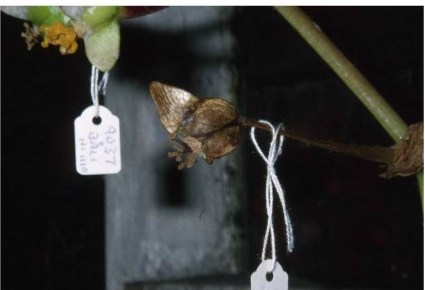
A mature seed pod ready to be removed
Seed sowing is carried out in the normal manner in plastic seed trays using a fine seed compost, for early season seed sowing lights above the trays are necessary and also for the first month to six weeks to give extra growth to the young seedlings
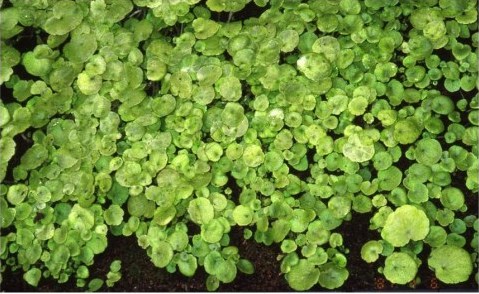
Seedlings ready for the first transplanting
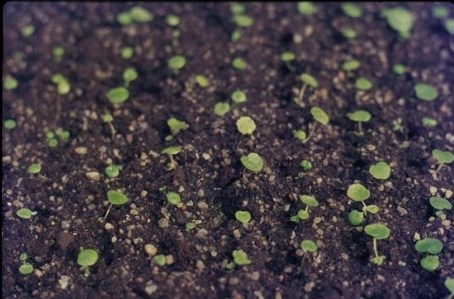
Seedlings following first transplant.

Seedlings are grown on in seed trays to around this size then you have to decide if you are going to to grow on indoors in pots, gradually increasing to a maximum of five or six inch pot giving a good flower in August from a January sowing.
If outdoor you plant out late June when frosts are well past, they should be in flower September October to enable you to select any to grow on for a second year if they show some promise.
John went on to talk about previous well known hybridisers in Scotland
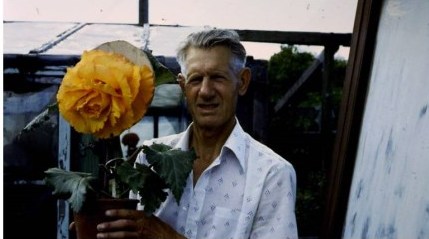
The most notable hybridiser has been George McCormick from Kirkconnel, many of his varieties are still seen on the show bench today.
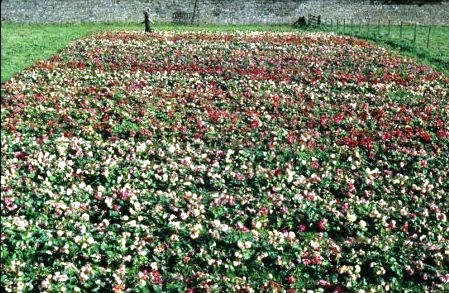
This is a picture of Ron White,s seedlings at his nursery at Inchinnan they just beginning to flower, Ron always had a show stand at Ayr show and were really lovely exhibits.
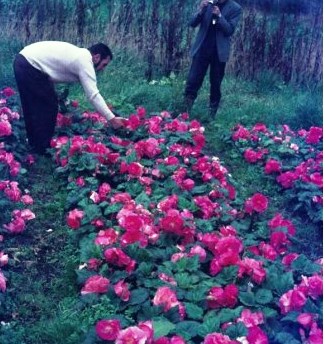
A young Bill Dodds from Ayr another well known grower and hybridiser, helping to select best blooms at Ron White,s nursery.
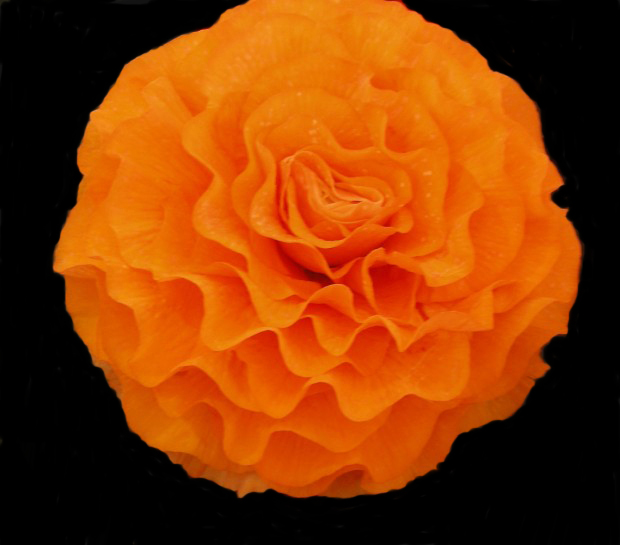
Colin Hamilton a flower hybridised by John, this bloom is the second
most popular cut bloom in the East of Scotland at the flower shows narrowly beaten by Sweet
Dreams
-------------------------------------------------------
John gave an excellent talk, it was obvious he was a school teacher by the way he selected the items and linked them together to form a complete picture of the steps in the hybridising of new seedlings.
As we completed the talk the questions raised by the members drifted onto many aspects of growing Begonias and gave a pleasant end to another really good meeting.
--------------------------------------------------------------------------------------------------------------------------------------
Meeting 16th March
Our third meeting of the year again well supported by our members
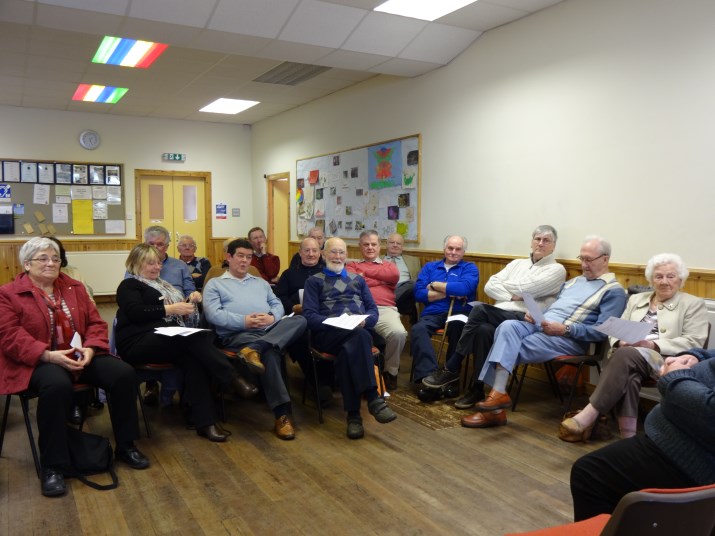
The members just before meeting started
------------------------------------------------------------------------------------------------------------------------------------
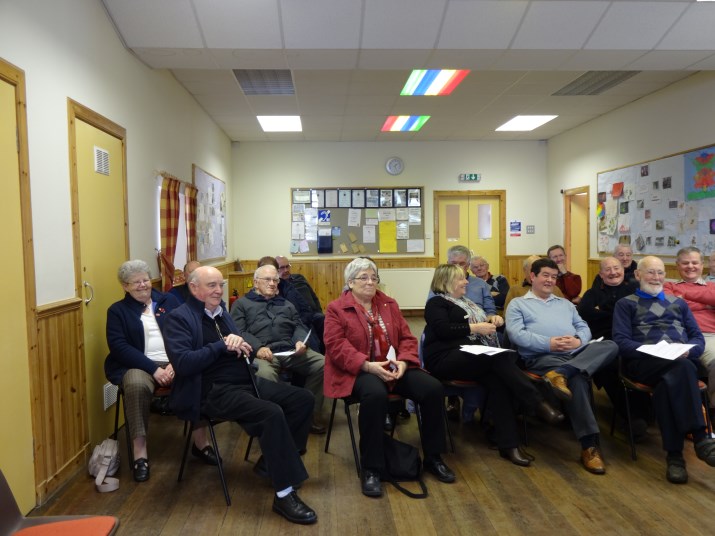
-------------------------------------------------------------------------------------------------------------------------------------
Our president Andy Paterson welcomed everyone to our regular meeting then set the scene for the main item today a question and answer session.
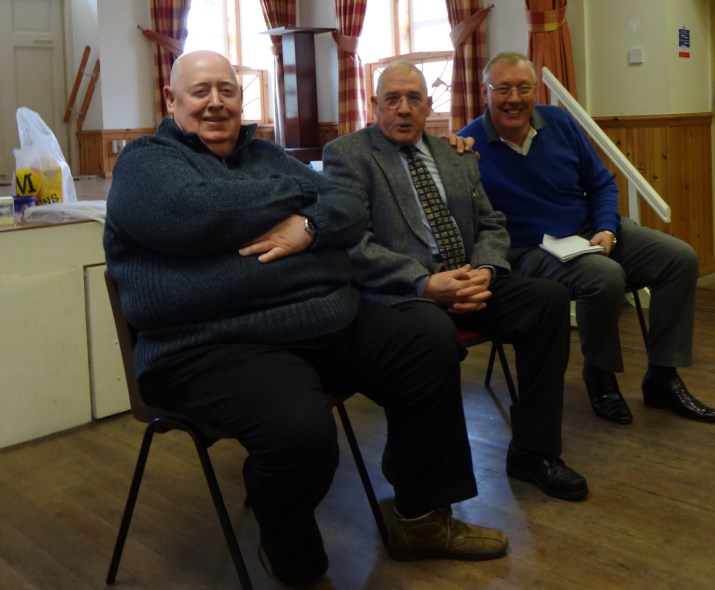
The three wise men on the panel, no I don,t think so either.
-------------------------------------------------------------------------------------------------------------------------------------
The panel was made up left to right Ronnie Welsh Jim Evans and our president Andy Paterson. The session covered many aspects of growing and some of the common problems encountered. Hopefully the newer members found it informative and enjoyable and the injection of some humour and banter was I am sure enjoyed by all the members.
As always there were differences of opinion between the members and the guidance gained by the members listening to two different points of view on a subject helps the members greatly by giving a broad base to the discussions and this is one of the main aims of these panel sessions.
Another enjoyable meeting.
-------------------------------------------------------------------------------------------------------------------------------------